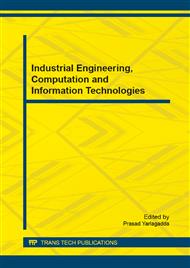[1]
R. Zhao, Sense of community and continuance intention towards online language learning, Applied Mechanics and Materials. 475-476 (2014) 1182-1185.
DOI: 10.4028/www.scientific.net/amm.475-476.1182
Google Scholar
[2]
D. McAdam, Political Process and the Development of Black Insurgency 1930–1970, University of Chicago Press, Chicago, (1982).
Google Scholar
[3]
A. P. Rovai, Development of an instrument to measure classroom community, Internet and Higher Education. 5 (2002) 197–211.
DOI: 10.1016/s1096-7516(02)00102-1
Google Scholar
[4]
D. Wood, J. S. Bruner, & G. Ross, The role of tutoring in problem solving, Journal of Child Psychology and Psychiatry. 17 (1976) 89–100.
DOI: 10.1111/j.1469-7610.1976.tb00381.x
Google Scholar
[5]
J. McKenzie, Beyond Technology: Questioning, Research and the Information Literate School Community, FNO Press, Bellingham, WA, (2000).
Google Scholar
[6]
C. McLoughlin, Learner support in distance and networked learning environments: ten dimensions for successful design, Distance Education. 23(2) (2002) 149-162.
DOI: 10.1080/0158791022000009178
Google Scholar
[7]
J. Radford, P. Bosanquet, R. Webster, P. Blatchford, & C. Rubie-Davies, Fostering learner independence through heuristic scaffolding: A valuable role for teaching assistants, International Journal of Educational Research. 63 (2014) 116-126.
DOI: 10.1016/j.ijer.2013.02.010
Google Scholar
[8]
Information on http: /www. learningpaths. org/papers/papersupport. htm.
Google Scholar
[9]
T. Anderson, Getting the mix right again: an updated and theoretical rationale for interaction, The International Review of Research in Open and Distance Learning. 4(2) (2003) 9-14.
DOI: 10.19173/irrodl.v4i2.149
Google Scholar
[10]
A. P. Rovai, Development of an instrument to measure classroom community, Internet and Higher Education. 5 (2002) 197–211.
DOI: 10.1016/s1096-7516(02)00102-1
Google Scholar


